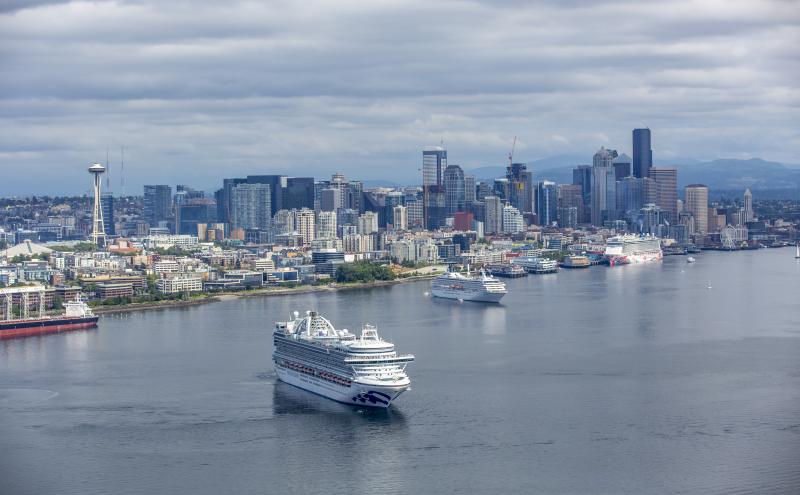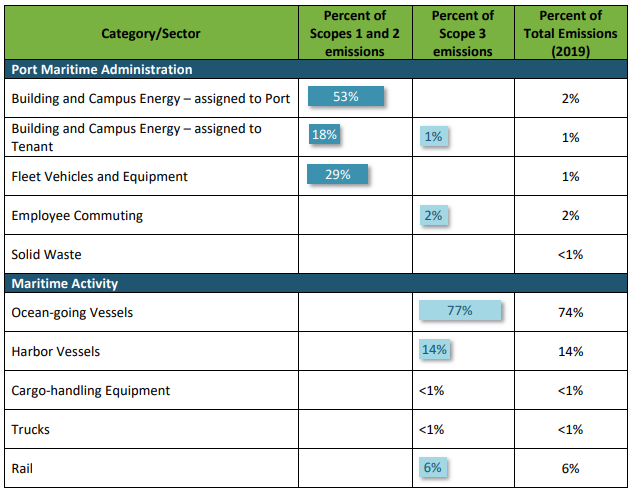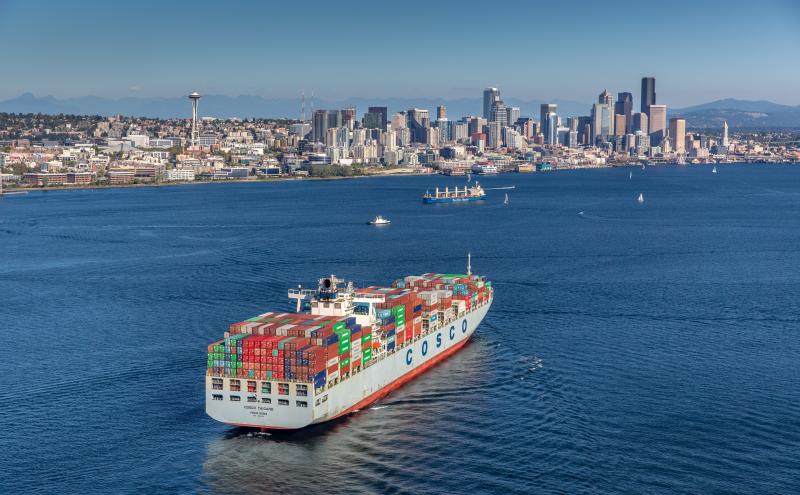
Charting the Course to Zero: Port of Seattle’s Maritime Climate and Air Action Plan (the MCAAP) is a comprehensive plan to address climate change and air pollution from maritime sources. It charts the course to achieve the Port’s Century Agenda greenhouse gas (GHG) reduction targets and implement the 2020 Northwest Ports Clean Air Strategy (2020 Strategy) vision to phase out emissions from seaport-related sources by 2050. Port of Seattle Commission adopted Resolution No. 3792 to adopt the MCAAP on November 16, 2021
About the Plan
The MCAAP was created to address the urgency of the climate crisis and the needs of near‐port communities in Seattle impacted by air pollution. The adverse effects of climate change are more likely to be borne by historically marginalized communities, including Black, Indigenous, and people of color (BIPOC). In addition, BIPOC communities are also disproportionately exposed to air pollution and other environmental hazards. Although King County meets national air quality standards, the Port recognizes that pollution exposure, access to economic opportunity, and human health vary based on where people live. In Seattle, communities in the Duwamish Valley bear a disproportionate burden of health impacts and environmental injustices compared to other areas of the city.
The MCAAP identifies strategies and actions the Port will take to reduce maritime‐related air and GHG emissions in the next ten years towards a vision of zero emissions by midcentury. The scope covers GHG emission sources related to administrative operations of the Port’s Maritime and Economic Development Divisions, such as energy used in port buildings, fuel used in fleet vehicles and equipment, and emissions associated with employee commuting and solid waste transportation and disposal. It also covers air pollutant and GHG emissions sources from Port Maritime tenants and the maritime supply chain, such as cruise sailings, grain terminal operations, commercial fishing, and recreational marinas. In addition to emission reduction opportunities, the plan encompasses the future carbon sequestration potential of the Port’s shoreline and habitat restoration programs.
As a maritime-focused plan, the MCAAP does not include GHG or air pollutant emissions associated with Seattle‐Tacoma International Airport (SEA Airport) administration, airlines, tenants, or ground transportation. SEA Airport creates its own separate plans and inventories to track and address these sources (learn more in the Sustainable Airport Master Plan). The MCAAP also excludes emissions from the Northwest Seaport Alliance’s (NWSA) container cargo operations, which includes port container trucks and container ships. Learn more about how NWSA will address emissions from these sources in the draft NWSA Northwest Ports Clean Air Strategy Implementation Plan.
While the MCAAP provides detail and interim commitments for how the Port of Seattle will work toward the 2020 Strategy commitment to phase out maritime-related emissions by 2050, implementation of specific projects will continue to be defined by ongoing engagement with near-port communities, government agencies, and maritime industries.
Read the Maritime Climate and Air Action Plan
- Charting the Course to Zero: Port of Seattle's Maritime Climate and Air Action Plan (November 2021, final)
- Community Quick Reference Guide to the MCAAP (November 2021, final)
- This guide provides a brief summary of the Maritime Climate and Air Action Plan and highlights sections of interest to members of Seattle's near-port communities.
By Section:
- Executive Summary
- Section 1: Introduction
- Section 2: The Port's Maritime Emissions
- Section 3: Strategies to Reduce Impacts: Port Maritime Administration
- Section 4: Strategies to Reduce Impacts: Maritime Activity
- Section 5: Implementation
- Appendices
Port of Seattle's Maritime Emissions
The MCAAP covers the Port’s maritime-related emissions in two parts: Port Maritime Administration and Maritime Activity.
| Port Maritime Administration GHG Emissions Sources | Maritime Activity GHG and DPM Emissions Sources |
|---|---|
|
|
Port Maritime Administration emissions sources make up only 6% of the Port’s total maritime-related GHG emissions. The Port has relatively more influence over these sources and they include a mix of Port-owned or controlled GHG emissions (Scope 1), indirect GHG emissions from purchased electricity (Scope 2), and Port-influenced GHG emissions (Scope 3). Learn more about how the Port conducts annual GHG inventories to measure and track Port Maritime Administration emissions.
Maritime Activity sources contribute 94 percent of the Port’s total maritime-related GHG emissions. As the Port does not own or operate vessels or equipment within maritime activity sectors, it has limited influence over GHG emissions from these sources, which all fall under Scope 3. Maritime Activity sources are also the largest contributors to maritime-related diesel particulate matter (DPM), the primary air pollutant of concern for near-port communities. Learn more about the how the Port measures and tracks Maritime Activity emissions through the Puget Sound Maritime Air Emissions Inventory.

Strategies to Reduce Emissions
The MCAAP identifies a set of ambitious, timely strategies and actions to be taken by 2030 for both Port
Maritime Administration and Maritime Activity sectors to decrease GHG and air pollutant emissions. Strategies and actions align across the following themes:
- Transition from fossil‐based energy to zero‐emission energy in Port maritime administration and facilitate the transition for maritime industries
- Continually reduce energy use and emissions in the interim to proactively address the impacts of climate change and air quality on community health
- Involve communities in decision‐making and take an equity approach to climate and air emissions reductions
- Advance policy, funding, and technology development for climate and clean air action through partnerships
- Leverage habitat restoration projects to sequester carbon, among other benefits
Key objectives across these themes to be taken by 2030 include:
- Continual engagement with community, industry, and government to reduce emissions
- 100% of Port-owned light-duty vehicles are electric or use renewable fuels
- No fossil natural gas use in Port-owned buildings
- Shore power infrastructure installed at all cruise ship berths
- 100% of homeport cruise ship calls connect to shore power
- The Seattle Waterfront Clean Energy Strategy has established industry and utility partnerships to address key constraints and deploy enabling infrastructure for zero-emissions equipment, locomotives, vehicles, vessels and buildings





